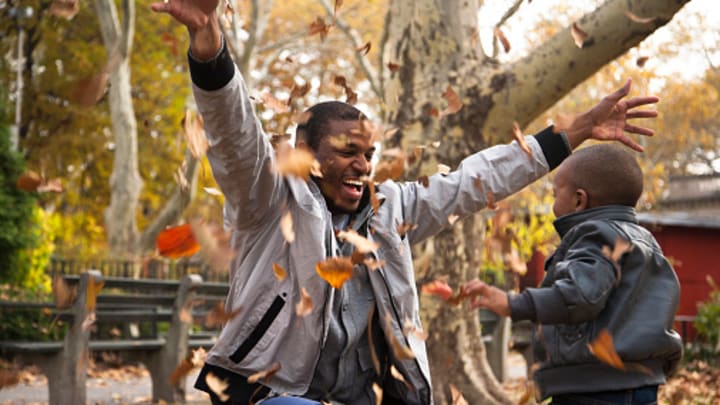Whether you’re into traditions like apple bobbing, haunted houses, or Oktoberfest, there are plenty of reasons to get into the pumpkin vibe. The change from summer to fall may present challenges (like seasonal affective disorder, or SAD) for some, but research shows the same shifts evoke positive feelings in many ways. More specifically, rich autumnal landscapes, opportunities to start fresh, and holiday spirit are major reasons many look forward to fall.
- The Colorful Landscapes
- Starting with a Clean Slate
- The Importance of Holidays, Nostalgia, and Associations
The Colorful Landscapes
Previous research has shown that nature may significantly boost people’s well-being and mental health. According to the American Psychological Association’s Monitor on Psychology magazine, the benefits may include lower stress levels, improved moods, and increased empathy and cooperation. Most research concerning nature’s effects on people focuses on green landscapes, but scientists have recently started to uncover how the colors of autumn terrains may also affect mood.
A 2024 study in the journal PLOS ONE, conducted by researchers from Northwest Agriculture and Forestry University in China, examined the therapeutic effects of different senses when people are exposed to autumn-colored foliage and barren tree fields. They hypothesized that visual and auditory stimuli of these landscapes would greatly impact physiological and psychological responses.
To test this theory, scientists monitored 320 college students’ heart rates and brain activity as they experienced the sounds and sights of different landscapes through VR devices. Some participants only watched visual stimuli (vibrant autumnal settings or bare-tree scenes). Other students only listened to high-resolution recordings of calming nature sounds that fit either setting, and some volunteers watched leaf-filled or bare-tree environments while listening to nature sounds. Then, they all answered questionnaires to describe their psychological status.
The researchers found that exposure to colorful fall landscapes generally resulted in less stress than in bare tree settings and a control group. Multicolored landscapes positively impacted psychological and physiological changes, such as relaxation levels, stress alleviation, and emotional regulation. As the scientists put it, “Within the color evaluation of autumn landscapes, factors like the primary autumn color, color saturation, and brightness play essential roles [in recovery effects].”
Autumn foliage largely consists of hues of orange, red, and yellow. Though one’s interpretations of color are based on culture, language, and other subjective factors, red is usually associated with warmth and positivity and can raise people’s energy. Orange is frequently linked to feelings of enthusiasm and passion; yellow is generally associated with happiness and brings out characteristics like intelligence and creativity. Thus, we may already have positive emotions about typical autumn colors that contribute to our fall enthusiasm.
Starting with a Clean Slate
People may see the beginning of a year as an opportunity for a fresh start, but others view fall in the same way.
The season is a temporal landmark, meaning it changes our perspective on time and signifies a change in our lives. This mentality can be traced back to childhood. The excitement kids get from starting school in the fall—like seeing friends again, getting new supplies, and shopping for new clothes—often sticks with people in adulthood. Such attitudes can lead to more motivation and uplifted spirits during the season.
Fall often represents a return to normality and stability after a leisure-focused summer. “[Fall] is a shift into a different routine, especially in the U.S., where we’re coming back from summer, things have been up in the air, [and] kids have been home … now life is going to be a little more predictable,” Amy-Jane Griffiths, a licensed clinical psychologist at Chapman University, tells Mental Floss. “[Fall is] a nice marker for us to reset.”
The Importance of Holidays, Nostalgia, and Associations
Never underestimate the power of gatherings. Griffiths says that fall is often “associated with things that are related to social connection,” especially holidays like Thanksgiving and Christmas. “Sometimes, people associate [fall] with the feeling of comfort, warmth, safety, or belonging to a group,” she says. “There’s a lot of emphasis on family during many of these times. It brings us back to our roots and reminds us what’s important in our lives.”
Spending time with those we care about during the holidays often triggers nostalgia, which Griffiths says may improve psychological health and our ability to adapt to different situations. “A few studies also say that [the feeling] contributes to our perception of the meaning in life,” she says. Social connections are essential to well-being and emotional health; fall is normally when people start to rekindle close relationships through holiday gatherings.
Companies love to capitalize on those emotional responses to biological senses. Corporations advertise their fall products, whether they’re pumpkin-spiced-themed menu items or autumn-inspired hair colors, to feed the cozy and warm feelings of fall. Consumers then form positive associations with their products.
The next time you’re standing in line for a Pumpkin Spice Latte from Starbucks, you’ll know those feelings of warmth and anticipation are all part of the season.
Read More About Seasons:
